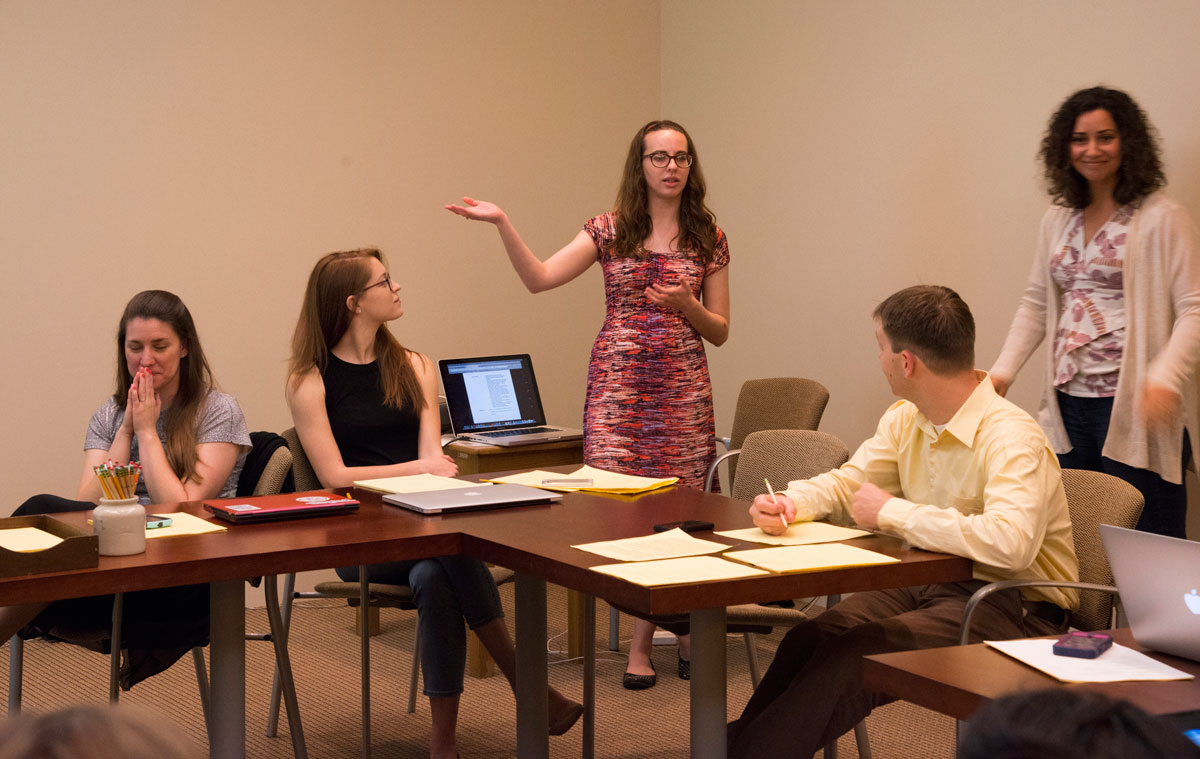
With the support of UTeach Liberal Arts and the Jefferson Center for Core Texts and Ideas, University of Texas at Austin professor Elon Lang led a one-week workshop at the Harry Ransom Center this summer called “Teaching from the Archives.” It gives educators first-hand experience with the resources of the Ransom Center so they can enhance their own middle and high school classes. About a dozen teachers and librarians met at the Ransom Center each morning to explore and learn from the archive.
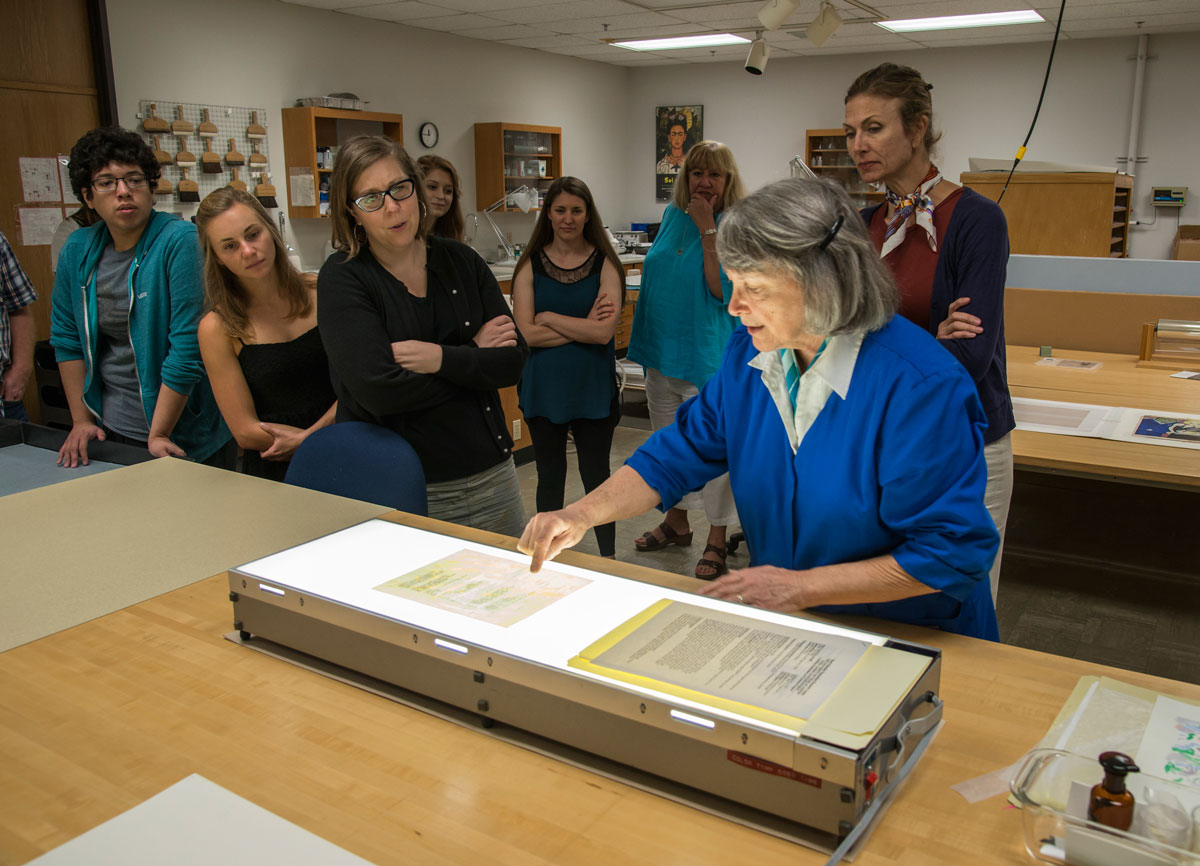
Teachers first learned how to properly handle archival materials and took a tour of the conservation labs, behind-the-scenes experiences that deepened their knowledge of the types of materials they would soon be working with. Conservators discussed items in the queue for treatment, including a Sylvia Plath manuscript and flower petals with poems written on them almost 100 years ago.
The teachers worked in pairs to craft a lesson plan applicable to their own classrooms. Teachers with more experience were paired with younger educators, all of whom are affiliated with UTeach—a professional middle and high school teaching preparation program at The University of Texas at Austin. Each team selected a topic, ranging from the poetry of Anne Sexton to the acting methodology of Robert De Niro, and used the Ransom Center to help teach that topic in a more in-depth way. At the end of the week, each pair presented their lesson plans.

One pair, Michelle Iskra-Kinney and Elizabeth Schmidt , took some time to look at different versions and revisions of Walt Whitman’s poem “O Me! O Life!” What struck them was a notable difference in the last line between an earlier and later edition. In an early version of the text the last line reads, “That the powerful play goes on, and you can contribute a verse.” However, the final version of the text has, “you may contribute a verse.” They believe that the difference between “can” and “may” is significant, each word carrying with it a different implication. When teaching the poem to high school students, they can use this discovery to constructively lead class discussion in new and unexpected directions.
“The Ransom Center is valuable for us as teachers to compare and evaluate primary sources and to compare newer editions so we can facilitate discussions with our students,” said Erin Cutcheon of McNeil High School, who has taught Arthur Miller, Ernest Hemingway and F. Scott Fitzgerald to her students. She and her partner, Erin Balfour, produced a lesson plan to have students create long-term “commonplace books,” modeled on record-keeping scrapbooks popular in the late 1800s, of which the Ransom Center has many.
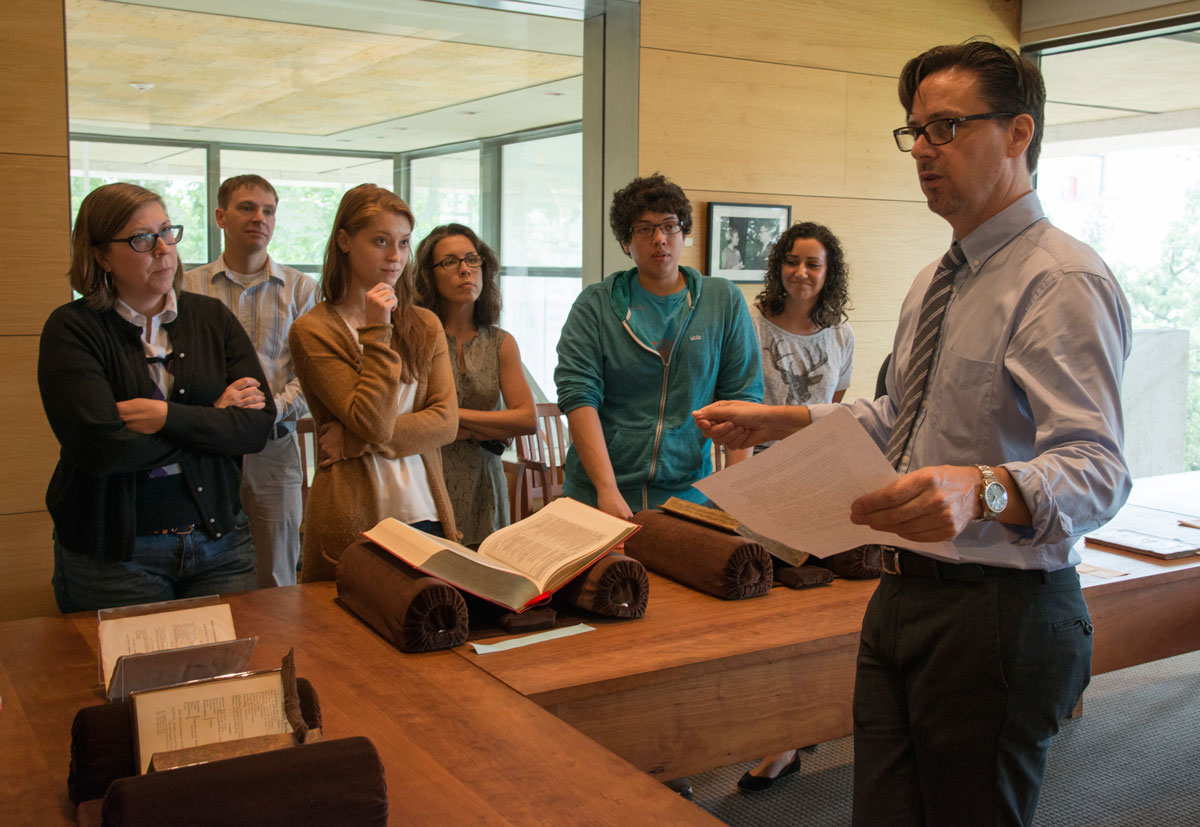
The class also provides interactive workshops with the archive. Ransom Center curator Gerald Cloud led a presentation of various printed versions of Shakespeare’s plays, showing the teachers what they could learn from textual variations and printing history. On one day, the group discussed how to teach a section from Shakespeare’s A Midsummer Night’s Dream. Afterward, they scrutinized eight editions of the text, ranging from the rare 1623 First Folio edition to a nineteenth-century quarto. They studied the differences between the texts, the different footnotes of the editors (including a humorous comment from Samuel Johnson, who commented on Shakespeare’s “not good English”), and what those differences tell us about the history of the work.
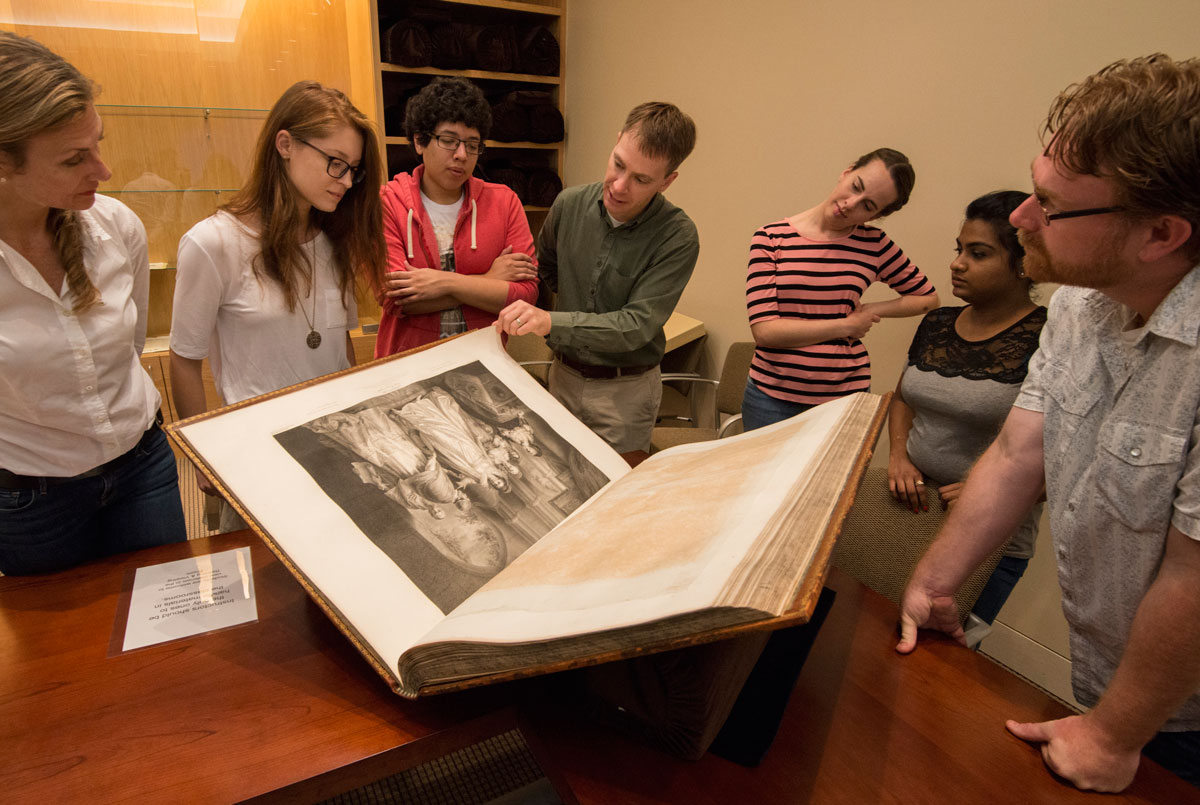
For Professor Lang, using the archive can immensely benefit the pedagogical process. Studying manuscripts and drafts of works—especially difficult ones—sheds light on the work’s significance, sometimes making darker or obscure material more palatable or powerful. For example, using copies of manuscripts found in the Ransom Center, Dr. Lang showed the class a history of Tennessee Williams’s A Streetcar Named Desire, highlighting the alternate endings in each one. Using the manuscripts and Williams’s private correspondences, Lang taught an archive-based lesson to the participants, bringing more depth to the work and demonstrating the power of the archive as a teaching tool.
The history of a text can be just as illuminating and engaging as the work itself. These teachers learned how to use both the physical and digital resources at the Ransom Center to add more depth to their English classes. “The teacher-participants in the workshop were incredibly enthusiastic about their experience at the Center,” Lang said. “They consistently told us that it had been the most useful professional development activity they had done in years and would sign up for an advanced version in the future if we would offer one.” The course will be offered again next summer. “I loved that with so many resources in once place, we were quickly able to generate ideas in just one week,” said Andrea Khawaja, who planned a lesson around Tim O’Brien’s The Things They Carried with Jordan Connell.
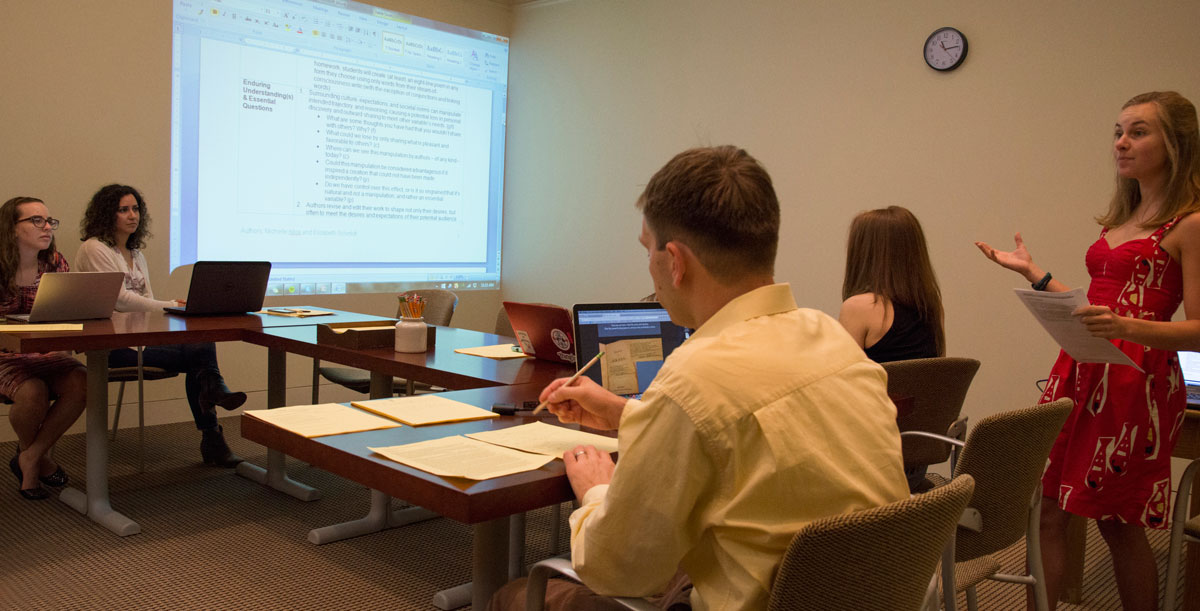
The lesson plans produced from the Ransom Center’s materials may be found at the UTeach website. Along with the ones described above are lessons based on the DeNiro collection by Frank Webster and Chris Henao and lessons based on the Edgar Allan Poe collection by Amelia Lewis and Akshata Stephen. Teachers are encouraged to explore the lesson plans; the UTeach office will accept requests from credentialed teachers to view the visual aids assembled by their teacher participants for personal educational purposes. They may also register as researchers themselves to discover Ransom Center materials that can enliven their middle and high school classroom.